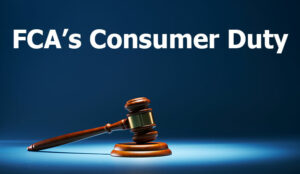In today’s fast-paced regulatory landscape, a robust compliance program is essential for mitigating risk and ensuring sustainable growth. I’m Fred, an FCA Compliance Consultant with extensive experience in banking, finance, and consultancy. Over the years, I have guided small and medium-scale businesses—particularly in the payment services industry—through the complexities of FCA and HMRC regulations. In this post, we outline a step-by-step approach to developing a comprehensive compliance program, incorporating contemporary examples from leading FinTech firms and digital banks that are redefining regulatory adherence.
Step 1: Conduct a Thorough Risk Assessment
A solid compliance program begins with understanding your specific risks:
- Identify Key Risk Areas: Analyse your business operations to pinpoint areas susceptible to regulatory breaches. For example, digital banks like Revolut continuously assess risks associated with cybersecurity and money laundering.
- Quantify Risks: Evaluate both the likelihood and potential impact of each risk. Utilize modern risk management tools that offer real-time data analytics, allowing you to adjust your risk profile as market conditions change.
Step 2: Develop Tailored Policies and Procedures
Create clear, actionable policies that address your unique risk landscape:
- Custom Policy Formation: Draft policies that align with your operational model and regulatory requirements. Take inspiration from companies such as Monzo, which have developed bespoke policies to manage digital transactions effectively.
- Documentation: Ensure that all procedures are well-documented and easily accessible to all employees. This documentation should outline roles, responsibilities, and steps for maintaining compliance across the organization.
Step 3: Foster a Culture of Compliance Through Continuous Training
Employee engagement is critical for successful program implementation:
- Regular Training Sessions: Conduct frequent training sessions to ensure staff remain up-to-date with the latest compliance requirements. Incorporate scenario-based training that mirrors real-world challenges.
- Cultural Integration: Encourage a culture where compliance is a shared responsibility. Contemporary businesses are increasingly using e-learning platforms and virtual training modules to reach a broader audience efficiently.
Step 4: Leverage Technology and Automation
Modern compliance solutions rely on technology to enhance accuracy and efficiency:
- Implement Compliance Management Software: Utilize digital tools that automate record-keeping, track regulatory updates, and generate compliance reports. FinTech firms are at the forefront of using such technologies to reduce manual errors and streamline operations.
- Data Security Measures: Invest in advanced cybersecurity protocols to protect sensitive data, reflecting the growing emphasis on digital security seen in current regulatory trends.
Step 5: Establish Continuous Monitoring and Improvement Processes
A compliance program must evolve with changing regulations and business environments:
- Regular Audits: Schedule internal audits and assessments to identify gaps and areas for improvement. Continuous monitoring helps maintain a high level of readiness, similar to how industry leaders routinely review their processes.
- Feedback Mechanisms: Incorporate systems for employee and stakeholder feedback, ensuring that the compliance program remains dynamic and responsive to new challenges.
- Benchmarking: Compare your compliance practices against industry standards and best practices, adapting successful strategies from leading competitors.
What Next?
Building a robust compliance program is an ongoing process that requires a proactive and structured approach. By conducting comprehensive risk assessments, developing tailored policies, fostering a compliance-oriented culture, leveraging modern technology, and continuously monitoring and refining your practices, your business can navigate the regulatory landscape with confidence.
Embrace these steps to transform compliance from a regulatory burden into a strategic asset that supports growth and resilience.
For tailored consultancy services and further insights into developing a robust compliance framework, feel free to connect with me directly.



